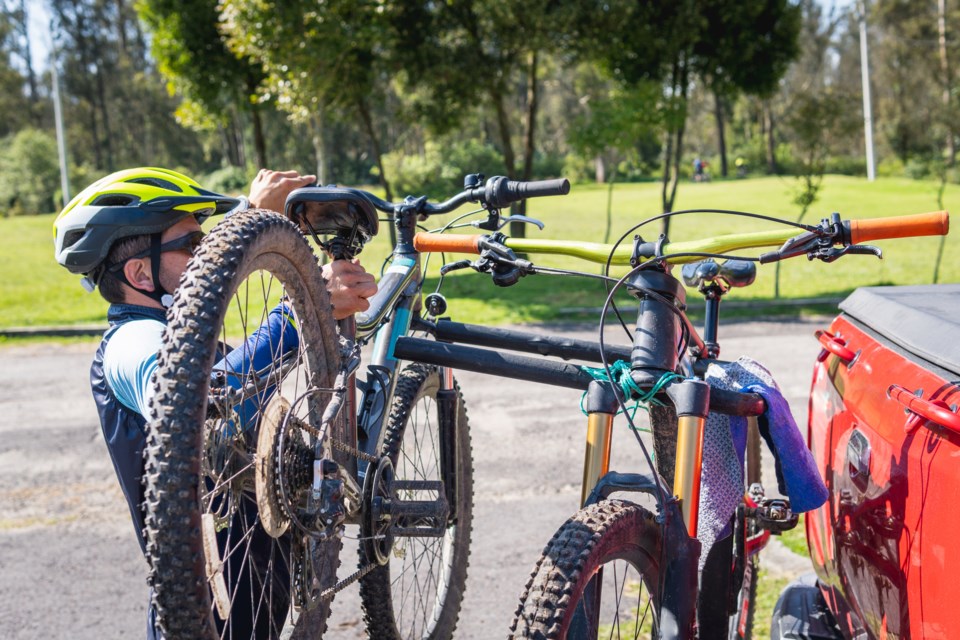What the BabyBjörn infant carrier is to new parents, the bike rack is to many locals.
Sea to Sky residents love their bikes — the corridor has expansive networks of singletrack trails, and bike racks are affixed to many vehicles.
But do you ever look at a rear bike carrier in the grocery store parking lot or on the road and wonder if it is legal? Some stick out so far, they seem a threat to impede — or impale — passersby. Others obstruct the vehicle's licence plate or are so wide they cover the rear lights.
So what are the rules in B.C. around these popular car accessories?
In terms of the length of a vehicle with a rack, it must not stick out 1.85 metres behind the back or 4.5 metres behind the centre of the last axle, according to the province's Motor Vehicle Act Regulations.
Further, the bikes cannot stick out wider than the vehicle, the regulations state.
The regulations also state that lights "must not be shielded, covered or obscured by any part of the vehicle or load or by dirt or other material."
Racks are not to obstruct the rear licence plate.
The Motor Vehicle Act Regulations state: "A number plate must be kept entirely unobstructed and free from dirt or foreign material, so that the numbers and letters on it may be plainly seen and read at all times and so that the numbers and letters may be accurately photographed using a speed monitoring device or traffic light safety device prescribed under section 83.1 of the Act."
(To avoid these problems, the driver could move the plate to the back of the rack and attach secondary lights. )
Ignoring these rules can lead to a ticket from the police for between $109 and $230.




